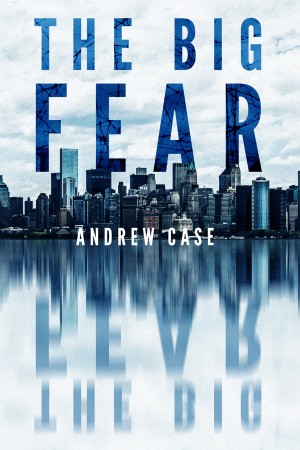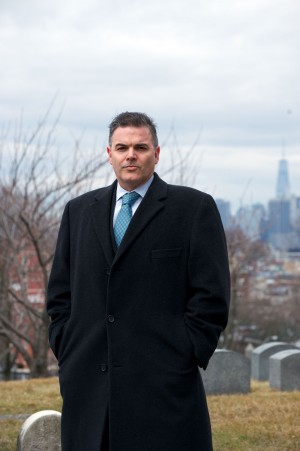 Pop quiz, hotshot – name a work of legal fiction in which the protagonist is a government lawyer other than a prosecutor. Difficult, right? Legal entertainment typically ignores the reality that there are numerous types of government lawyers who do not work for Jack McCoy or Chuck Rhoades. Lawyer-novelist Andrew Case seeks to reverse that trend in his new novel The Big Fear, which largely takes place at a New York City agency that investigates police misconduct.
Pop quiz, hotshot – name a work of legal fiction in which the protagonist is a government lawyer other than a prosecutor. Difficult, right? Legal entertainment typically ignores the reality that there are numerous types of government lawyers who do not work for Jack McCoy or Chuck Rhoades. Lawyer-novelist Andrew Case seeks to reverse that trend in his new novel The Big Fear, which largely takes place at a New York City agency that investigates police misconduct.
As the novel opens, off-duty NYPD officer Ralph Mulino is called to investigate a container ship. Upon arriving, Mulino discovers a dead body and believes the assailant is still on the ship. Mulino corners the assailant, and ultimately kills him after he pulls a gun on Mulino. Mulino is shocked to learn, however, that the assailant is not a regular criminal; he is a detective in the NYPD.
Enter the Department to Investigate Misconduct and Corruption (the “DIMAC”), an administrative agency of lawyers that investigates potential police misconduct. Christine Davenport is the head of the DIMAC, but fortuitously leaves the agency in order to join a prestigious law firm on the same day that Mulino’s actions make the news, leading to a media firestorm. In Davenport’s absence, her second-in-command, Leonard Mitchell, leads the investigation into the shooting. Mitchell has doubts that that Mulino committed any malfeasance and begins to believe that a conspiracy might be afoot. Meanwhile, Davenport, ostensibly ensconced in her plummy biglaw firm, heads up an internal investigation of a shady investment firm. Davenport soon makes a discovery that the investment firm and the Mulino shooting could be related, and it is up to Mitchell to connect the dots.
As he discussed in an interview with David Lat, Andrew Case has an interesting background. He worked for the Civilian Complaint Review Board before going to law school (he’s now an associate at Manatt, Phelps & Phillips), and his knowledge of New York City bureaucracy is very apparent. Case’s descriptions of the DIMAC — from its depressing buildings with bird feces on the windows and carpeting from the 1970s to the smell of its patrons to the serial protester who frequents DIMAC public meetings to complain about police shootings — give the novel a real sense of place. Even though Mitchell (the ostensible protagonist of the novel) is an attorney, this is not a traditional legal novel. Mitchell does not appear in court, conduct any legal research, or negotiate any deals. Nevertheless, lawyers or law students may appreciate learning about an area of the law that is not particularly well represented in fiction.
One of the major themes in the novel is that New York City is slowly but surely returning to its grimy roots. For example, one of the novel’s subplots is a sanitation worker strike, and the bags of trash piling up on the street corners is a constant reminder of that decay. Indeed, the title of the novel refers to the pervasive fear afflicting New Yorkers of some huge disaster, whether by terrorism or by accident, causing massive casualties. While I appreciated that this theme contributed to the hard-boiled, neo-noirish tone of the novel, it quickly became tiresome. And besides, New York now has over a dozen Shake Shacks; how bad could it be?
Further, Case’s bleak depiction of New York City occasionally detracts from the plot. At one point, Mitchell suffers a series of misfortunes so bad that I began to think he was a character in the classic Martin Scorsese dark comedy After Hours.

Do Law School Rankings Affect Your Choice?
Share your insights in this brief survey.
While the beginning of the novel takes awhile to get going, it moves quickly in its second half, never boring the reader. Further, the plot contains a twist toward the end that actually surprised me. Without giving away too much, I was prepared to make a certain criticism of the novel, but I was unable to do so after the twist, which I am not sure is good writing on Case’s part or premature criticism on my part, as I am usually pretty good at snuffing out twists in advance (I am looking at you, The Walking Dead). On the other hand, the fact that Davenport’s law firm just happens to be hired to conduct an investigation into a company that has a relationship with the Mulino shooting is a pretty big coincidence.
All in all, The Big Fear is a solid if unspectacular first outing for Case. Case shows enough promise as a writer that I hope he can take some time off from writing briefs to write a second novel. And maybe the characters in that novel will realize that New York now has Umami Burger.
(Disclosure: I received a review copy of this book.)
The Big Fear [Amazon (affiliate link)]
Earlier: ‘The Big Fear’: An Interview With Andrew Case
Harry Graff is a litigation associate at a firm, but he spends days wishing that he was writing about film, television, literature, and pop culture instead of writing briefs. If there is a law-related movie, television show, book, or any other form of media that you would like Harry Graff to discuss, he can be reached at [email protected]. Be sure to follow Harry Graff on Twitter at @harrygraff19.

